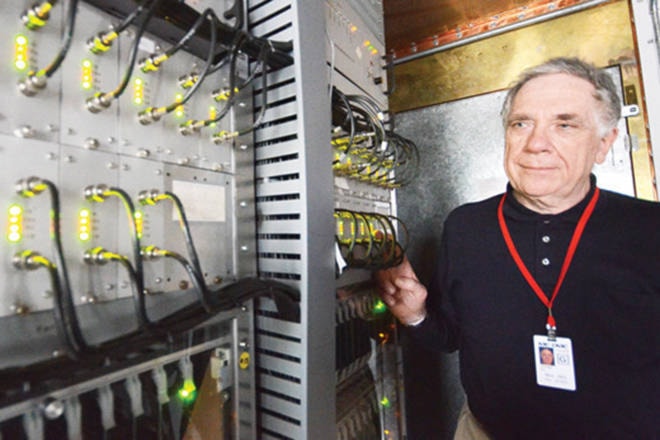Giovanni Domenico Cassini was an astronomer at the Paris Observatory in the 17th Century. He was both astronomer and astrologer to King Louis XIV, a double career that would not exist today.
Cassini was a skilled planetary observer, and sketched Martian surface markings, measured the rotation rates of Jupiter and Saturn, and discovered four of Saturn’s Moons: Iapetus, Rhea, Tethys and Dione. He was a joint discover of Jupiter’s Great Red Spot, studied Saturn’s rings and was the first to see a dark division in the rings now known as ‘Cassini’s Division.’ When a mission to explore Saturn, its rings and moons was decided upon, it was logical to name the spacecraft after Cassini.
The Cassini mission, a joint project of NASA, the European and Italian Space Agencies, was launched in 1997. A rocket powerful enough to put such a heavy spacecraft on a direct passage to Saturn was not available, so the trip involved flybys of Earth, Venus and Jupiter. Each encounter gave the spacecraft a ‘gravitational kick,’ and a bit more speed. It arrived at Saturn and went into orbit about the giant world in 2004. Cassini was not alone; also on board was a second, smaller spacecraft called Huygens, after Christiaan Huygens, another 17th Century astronomer. He was the discoverer of Titan, Saturnís largest Moon, and the spacecraft was intended to do a soft landing on Titan’s surface.
In December 2004 Huygens separated from Cassini, heading for Titan. In January 2005 it entered Titan’s atmosphere. The heatshield protected the spacecraft from the intense frictional heat as it bored into Titan’s upper atmosphere. When the speed was low enough, a parachute was deployed. As Huygens descended it took pictures and made measurements of Titan’s atmosphere. Using the technique of Very Long Baseline Interferometry, which was pioneered by Canada, radio telescopes on Earth monitored the on-board transmitter to precisely measure the position and speed of the spacecraft. Huygens landed on a streambed. The temperature was 179 C, indicating the liquid in the stream would probably have been liquid methane.
Cassini used its rocket motor and gravitational kicks from Saturn’s moons to change its orbit as needed to get a close look at Saturn and its rings, and to do close flybys of as many as possible of its satellites. This produced a flow of surprises. Enceladus has a surface covered by ice, with jets of water vapour coming out. It looks like Jupiter’s moon Europa: an icy covering with a deep, dark ocean underneath. In both cases the moons are heated by tidal forces inflicted on them by the giant planets about which they orbit. For some reason not yet understood, there is a hexagonal storm at one of Saturn’s poles. Cassini has had a close look at the rings and provided additional coverage of Saturn. However, now, with fuel running low, the mission needs to be brought to a useful end.
Letting the spacecraft run out of fuel and then orbit uncontrollably with a chance of colliding with one of the moons is unacceptable. It might hit a moon where life may exist, contaminating it so that we might never know for sure whether any life we find at some future date is not from our world. Instead, Cassini will do some of the high-risk experiments, such as passing repeatedly between the rings and the planet, providing close views of the rings and Saturn itself. This will involve the risk of colliding with the fragments of rock and ice making up the rings. If the spacecraft survives, in September it will be controlled to enter Saturn’s atmosphere. Its antenna will be pointed at Earth, and Cassini will send us back data for as long as possible until it burns up and becomes part of Saturn.
Top of FormJupiter rises soon after dark and Saturn around midnight. Venus lies low in the dawn glow. The Moon will be Full on May 10.
Ken Tapping is an astronomer with the NRC’s Dominion Radio Astrophysical Observatory, Penticton.
